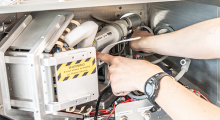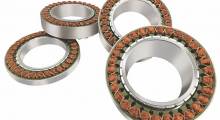As the demand for advanced medical technologies continues to escalate, robotic systems are becoming integral to surgical procedures, diagnostic processes, and patient care. Against this backdrop, the robotic surgical systems market in China is expected to grow at a compound annual growth rate of around 12% between 2023 and 2033, according to forecasts from GlobalData, a leading data and analytics company.
GlobalData’s report, “Robotic Surgical Systems Market Size by Segments, Share, Regulatory, Reimbursement, Installed Base and Forecast to 2033,” reveals that China accounts for around 30% of the Asia-Pacific (APAC) robotic surgical systems market in 2023.
Johnson & Johnson recently announced that the Monarch Platform and Monarch Bronchoscope, a robotically assisted device, have received regulatory approval in China. The company claims that the platform is the first minimally invasive, robotic-assisted technology approved for peripheral lung procedures in China and the first J&J MedTech robotic-assisted technology approved in China. This also marks the first regulatory approval of the Monarch Platform outside of the United States.
“China's rising mortality rates highlight the limitations of the currently available diagnostics, particularly their inability to effectively detect diseases like cancer in their early stages,” said Diksha Balmuchu, medical devices analyst at GlobalData. “This emphasizes the urgent need for more advanced, less invasive, and precise interventions, prompting a shift towards robotic-assisted interventions.”
Johnson & Johnson’s new Monarch Platform enables physicians to reach small, hard-to-access peripheral lung nodules at an early stage and with greater precision. With its flexible robotic capabilities, it has the potential to improve patient outcomes and fulfill unmet clinical requirements.
Balmuchu emphasized that China continues to make steady progress in the research and healthcare domain, advancing towards the integration of robotic-assisted technology. “Monarch, one such technology with its promising results, has the potential to alleviate diseases, reducing the risk of mortality and facilitating timely treatment in China,” Balmuchu said. “Further advancements could make it a valuable addition to conventional methods, enhancing accuracy and productivity.”
Article topics
Email Sign Up













